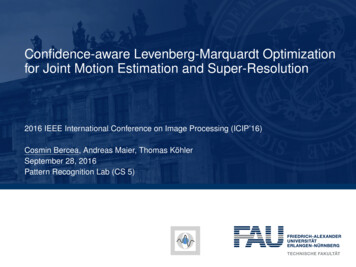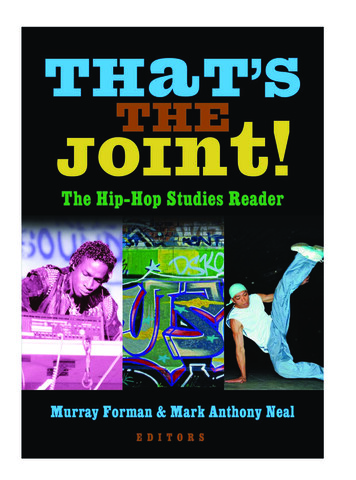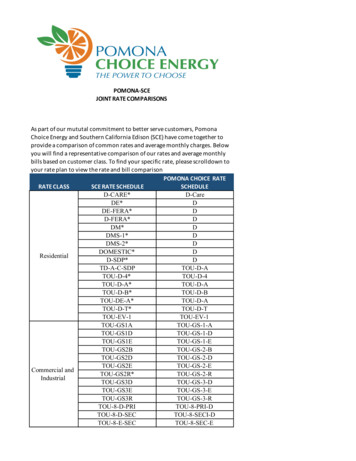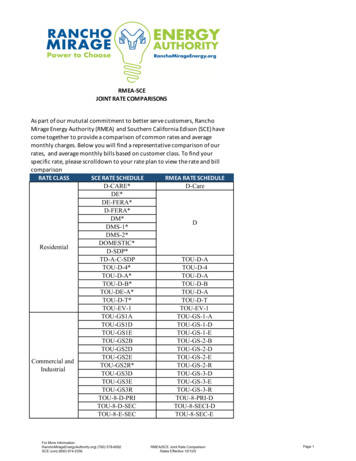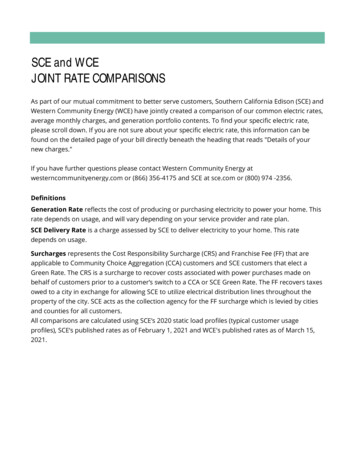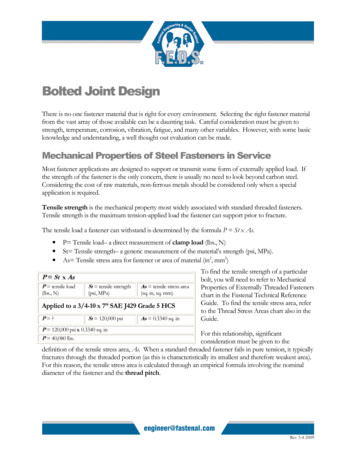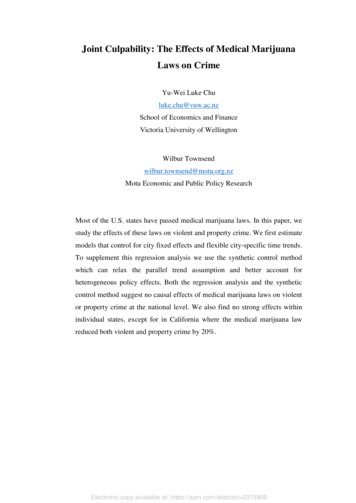
Transcription
Joint Culpability: The Effects of Medical MarijuanaLaws on CrimeYu-Wei Luke Chuluke.chu@vuw.ac.nzSchool of Economics and FinanceVictoria University of WellingtonWilbur Townsendwilbur.townsend@motu.org.nzMotu Economic and Public Policy ResearchMost of the U.S. states have passed medical marijuana laws. In this paper, westudy the effects of these laws on violent and property crime. We first estimatemodels that control for city fixed effects and flexible city-specific time trends.To supplement this regression analysis we use the synthetic control methodwhich can relax the parallel trend assumption and better account forheterogeneous policy effects. Both the regression analysis and the syntheticcontrol method suggest no causal effects of medical marijuana laws on violentor property crime at the national level. We also find no strong effects withinindividual states, except for in California where the medical marijuana lawreduced both violent and property crime by 20%.Electronic copy available at: https://ssrn.com/abstract 2915909
“A young boy who had become addicted to smoking marihuana cigarettes . seized anax and killed his father, mother, two brothers, and a sister.” Harry J. Anslinger,Commissioner of Narcotics, Additional Statement for the Marihuana Tax Act of 1937.1.IntroductionThere is a strong correlation between marijuana use and criminal activity(Bennett, Holloway, and Farrington 2008). Marijuana is the drug most commonlydetected among arrestees. The annual report of the Arrestee Drug Abuse MonitoringProgram II shows that 30–60% of adult male arrestees tested positive for marijuana usein 2013 (Office of National Drug Control Policy 2014). This association is one reasonthat the Federal Government continues to classify marijuana as a Schedule I drug (DrugEnforcement Administration 2011). However, the causal evidence on the effects ofmarijuana use on crime is limited and inconclusive (Adda, McConnell, and Rasul 2014;Braakmann and Jones 2014; Fergusson and Horwood 1997; Green et al. 2010;Markowitz 2005; Norström and Rossow 2014; Pacula and Kilmer 2003).Since 1996, 28 states and the District of Columbia have legalized medicalmarijuana. A medical marijuana law protects patients whose marijuana use has beenrecommended by a doctor from being convicted of marijuana possession. In practice,some medical marijuana laws come very close to legalizing recreational use ofmarijuana. Several recent studies have shown that medical marijuana laws cause a 10–20% increase in marijuana use, largely due to increasing heavy use (Chu 2014, 2015;Wen, Hockenberry, and Cummings 2015). The increase in marijuana use appears to beconcentrated among adults (Anderson, Hansen, and Rees 2015; Choo et al. 2014; Wen,Hockenberry, and Cummings 2015). A growing literature evaluating whether medicalmarijuana laws affect health and social outcomes has found that medical marijuana lawsreduce drunk driving, heroin usage, opioid addiction, obesity, suicide, and time spenton study (Anderson, Hansen, and Rees 2013; Chu 2015; Chu and Gershenson 2016;Powell, Pacula, and Jacobs 2015; Sabia, Swigert, and Young 2015).There are several channels through which medical marijuana laws could changecrime levels. The increase in marijuana use could decrease crime rates becausemarijuana use directly reduces aggression and violence (Miczek et al. 1994). Howeverthe long-run neuropsychological effects of marijuana could harm the brain which couldcause violent behavior (Boles and Miotto 2003; Hoaken and Stewart 2003; Macleod etal. 2004; Meier et al. 2012; Moore and Stuart 2005; Ostrowsky 2011; Volkow et al.Electronic copy available at: https://ssrn.com/abstract 2915909
2014). MRI images show brain abnormities even among casual and abstinent users (Bollaet al. 2005; Gilman et al. 2014; Raver, Haughwout, and Keller 2013). Medical marijuanalaws sometimes permit marijuana dispensaries. These dispensaries may shrink themarijuana black market and its associated violence. Dispensaries may also deter crimeas they are required to deal in cash and they thus invest heavily in security (Chang andJacobson 2011; Kepple and Freisthler 2012). Finally, medical marijuana laws couldreallocate police resources towards deterring crime instead of enforcing drug laws(Adda, McConnell, and Rasul 2014).The studies estimating medical marijuana laws’ effects on crime have foundmixed results (Alford 2014; Gavrilova, Kamada, and Zoutman 2014; Huber, Newman,and LaFave 2016; Morris et al. 2014). For example, Huber, Newman, and LaFave (2016)find a 15–20% decrease in both violent and property crimes, while Morris et al. (2014)report small and insignificant estimates. Gavrilova, Kamada, and Zoutman (2014) finda 6–22% reduction in crimes in the three medical marijuana states bordering to Mexicoand insignificant changes elsewhere.Given the mixed results in the literature it is unclear whether medical marijuanalaws affect crime rates. One limitation of the existing literature is that it relies on thestate level crime data from the Uniform Crime Reports (UCR), which containsubstantial measurement error. Because participation in the UCR program is generallyvoluntary, and many police agencies do not report every year, the composition ofreporting agencies in each state is not constant over time. Another limitation is thatsome states exhibit strong distinctive trends in crime, suggesting that the parallel trendassumption required in difference-in-difference regression may be unjustified. A thirdlimitation is that medical marijuana laws differ, and as such may have heterogeneouseffects (Pacula, Boustead, and Hunt 2014; Pacula et al. 2015). The existing literatureuses state populations to weight their regressions and thus their results could be drivenby a few large states (Solon, Haider, and Wooldridge 2015).In this paper we estimate the causal effects of medical marijuana laws on violentand property crimes using the UCR offense data for the years 1988–2013. To minimizemeasurement error we use agency-level data from cities of more than 50,000 cityresidents, with whom the FBI communicates regularly (Akiyama and Propheter 2005).We first apply a difference-in-difference research design implemented by a regressionmodel which controls for city fixed effects and flexible city-specific time trends. Wethen use the synthetic control method which can nonparametrically control for pre-law
differences in crime trends and thus can relax the parallel trend assumption (Abadie,Diamond, and Hainmueller 2012; Abadie and Gardeazabal 2003). The synthetic controlmethod can also investigate treatment effect heterogeneity by estimating causal effectswithin individual cities or states. We apply the synthetic control method at the city levelto be consistent with the regression analysis and to minimize measurement error. Weobtain synthetic controls for each medical marijuana city and aggregate these syntheticcontrols to the state and national levels. We calculate difference-in-difference estimatesusing the aggregated synthetic controls.Both the regression analysis and the synthetic control find no substantialchanges – positive or negative – in either violent or property crime after the passage ofmedical marijuana laws. Most of the regression estimates are small and insignificant.The estimates are somewhat sensitive to the functional form of the city-specific timetrends, suggesting that the parallel trend assumption presumed in the existing literaturemay be failing. The estimated effects also appear to be somewhat heterogeneous acrossstates: the signs of the estimates change when California is excluded from the sample.The results from the synthetic control method are broadly consistent with the regressionanalysis but more robust and precisely estimated. At the national level, both before andafter the passage of medical marijuana laws, the violent and property crime rates in themedical marijuana states are nearly identical to those in their synthetic controls,suggesting medical marijuana laws had no effect. The difference-in-differenceestimates derived from the synthetic control are very small and statistically insignificant:they indicate only a 0.8–2% decrease in violent crime and a 3% increase in propertycrimes.We also use the synthetic control method to investigate the effects of medicalmarijuana laws on specific crimes: murder, rape, robbery, aggravated assault, burglary,larceny, and motor vehicle theft. These estimates are all close to zero except for theestimated effect on motor vehicle theft, which indicates an increase of 8–16%. At thestate level we find only modest heterogeneity in the estimated effects; in most medicalmarijuana states, violent and property crimes generally do not deviate from theirsynthetic controls. One exception is California in which both violent and propertycrimes decrease by around 20% after the medical marijuana law. Overall, our findingssuggest no strong causal relationship between medical marijuana laws and criminality.This paper resolves the discrepancies in the existing literature and addresses animportant policy issue – medical marijuana laws’ effects on crime – using both a
traditional regression analysis and a nonparametric method, the synthetic control. Inevaluating these laws we also provide plausible evidence on the causal relationshipbetween marijuana use and criminal activity. As the legalization of recreationalmarijuana becomes increasingly popular, the lack of a positive causal effect ofmarijuana use on crime may ease public concerns. However, perhaps because themarijuana black market generates little violence (Caulkins and Pacula 2006; Reuter2009), we do not find evidence that medical marijuana legalization reduces crime.The paper proceeds as follows: Sections 2 and 3 briefly describe the medicalmarijuana laws and the UCR data. Section 4 presents the results from the regressionmodels and. Section 5 presents the results from the synthetic control method. Section 6concludes.2.Medical Marijuana LawsAs of 2016, 28 states and the District of Columbia have passed medicalmarijuana laws (ProCon.org 2016a). 1 States with effective medical marijuana laws andthe years these laws became legally effective are listed in Table 1. A medical marijuanalaw allows doctors to ‘recommend’ marijuana to patients, and prevents patients whohave received a recommendation from being convicted of marijuana possession. Inmost states, individuals need to register with the state medical marijuana program tobecome a legal patient and obtain a medical marijuana card. 2 The number of registeredpatients was relatively small before 2009 but has increased dramatically since. Anestimate from ProCon.org (2016b) suggests that there are about 1.2 million registeredpatients in 2016, roughly 0.8% of the population of medical marijuana states. Whilesome laws stipulate an exhaustive list of uses for which medical marijuana can berecommended, others allow for "any. illness for which marijuana provides relief"(California Health & Safety Code Ann. §11362.5). Those which do dictate the uses forwhich marijuana can be recommended tend to allow for pain alleviation (ProCon.org,2016a), though they differ as to whether that pain must be from a ‘diagnosable medical1Smoking is not a method approved by the medical marijuana laws in Minnesota, New York, Ohio andPennsylvania. In addition, there are 16 states with laws that specifically allow the use of cannabidiol, butthese laws are not considered medical marijuana laws because they do not legalize use of the marijuanaplant. For a list of these 16 states that allow the use of cannabidiol, e.php?resourceID 006473.2California, Maine, and Washington had created registration programs but registration remains voluntary.Some states such as Colorado and Nevada allow patients who do not join the registry to argue an“affirmative defense of medical necessity.”
condition’ (Pacula, Boustead, and Hunt, 2014). In states which have legalized medicalmarijuana, marijuana user groups advertise the contact details of “cannabisphysicians”. 3Medical marijuana laws passed prior to the Obama administration generally donot authorize marijuana dispensaries as marijuana remains a Schedule I drug underfederal classification. Instead, these medical marijuana laws let patients grow marijuanaon a not-for-profit basis. Marijuana dispensaries with grey legal status still exist,notably in California and Colorado. 4 The existence of dispensaries largely depends onthe attitudes of local government and law enforcement, which can be unstable. Forexample, Los Angeles closed down more than 400 dispensaries in 2010 (Barco 2010).In 2007, New Mexico became the first state to pass a medical marijuana law with aprovision to license production and distribution at the state level, but the first statelicensed marijuana provider in New Mexico was not approved until March 2009. In2009, the Obama administration announced that the Federal Government would nolonger arrest medical marijuana users and suppliers provided they complied with statelaws (Mikos 2011). Dispensaries are now regulated by state laws, and the numbers bothof dispensaries and of registered patients have increased significantly.3.UCR dataIn this paper we use the Uniform Crime Reports (UCR), an administrative seriesproduced by the FBI collating monthly police records from state and local policeagencies. We use the UCR offense data from the Inter-university Consortium forPolitical and Social Research. The offense data provide the number of criminal offensesreported to the police, excluding those the police agency deems ‘unfounded’. Californiabecame the first U.S. state to pass a medical marijuana law in 1996 and thus to establishpre-law crime trends we use data from 1988. At the time of writing, the latest year forwhich UCR data was available was 2013.3See for example the directory operated by California NORML:http://www.canorml.org
As of 20128 6states and the District of Columbia have passed medical , marijuana laws 1(ProCon.org 2016a) . States with effective medical marijuana laws and the years these laws became legally effective are listed in Table 1. A medical marijuana law allows doctors to ‘recommend’ marijuana to patients, and prevents patients who have received a recommendation from being convicted of .

